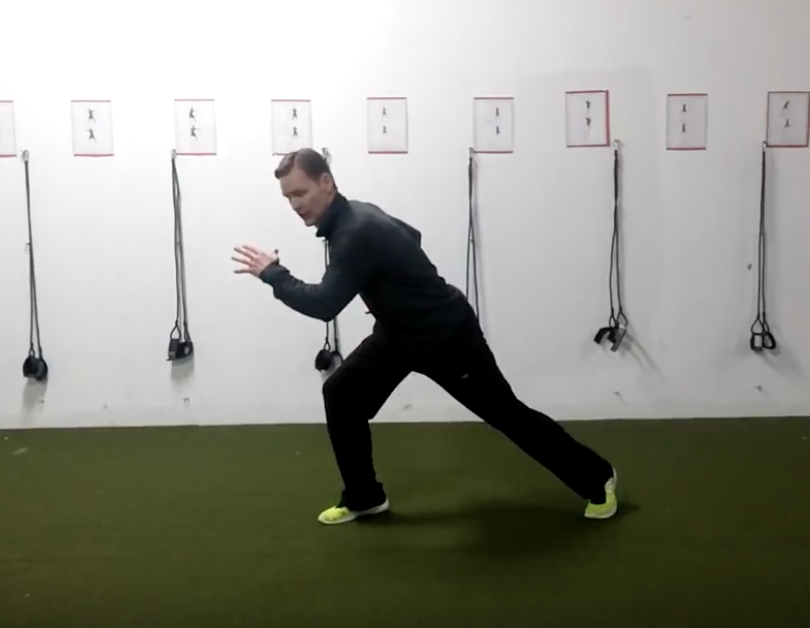Drive and Drop Start Technique
A Base Stealing Technique
By: Phil Loomis
Recently I watched a video of 3-time MLB stolen base leader Dee Gordon explaining a particular base stealing technique: how he initiates movement on an attempted steal of second base.
What he described was what he called a ‘crossover step.’ As movement coaches I think we are all aware of what this movement looks like but just in case below is a short clip:
Two things hit me while I was watching Gordon break down his base stealing technique. First, I bet he doesn’t actually do that in the game and second, I bet he has been taught the crossover step to initiate movement on stolen bases throughout his entire career.
I’ll start with my first thought (I bet he doesn’t use the crossover in game situations):
After watching Gordon in action, he did not initiate movement with a crossover step! Rather he used what I refer to as a drive and drop start. I will get back to the drive and drop start in more detail soon but suffice it to say the drive and drop start is the most efficient way to initiate movement when attempting a steal of second base.
My second thought (I bet he has been taught the cross-over step to initiate movement on stolen bases throughout his entire career):
Dee Gordon has quite literally been around the game of baseball his entire life, his father, Tom, played for over 20 years in MLB and his brother, Nick, is a top prospect in the Minnesota Twins organization. I believe Dee was taught this technique (crossover) from a very young age and he ‘thinks’ that’s what he does…
In reality he does not use the crossover and there is a reason for it!
Why the crossover to initiate movement to steal second base is not ideal:
A first step cross-over reduces acceleration force production because it increases reliance on the ‘lag’ leg for force generation. And when you crossover (with the left) that lag leg (right leg) is in a terrible position to produce force; quite literally, it ties you up!
The cross-over can also drive an ipsilateral body orientation: talk about an athletic buzzkill! We’ve all seen it with sport specialization and lack of early movement exposure, the athlete that skips with same side arm and leg actions- yikes! In the case of the athlete initiating movement with a crossover and driving their body into an ipsilateral orientation, they will eventually have to ‘fight through that’ to reorient their body so that the arms and legs can get back on contralateral track and coordinate optimal acceleration. That is really going to slow them down and cost valuable time they don’t have against higher level catchers with sub 2 second pop times.
Below is a video that explains two key technical flaws that may occur when using the cross-over step to initiate movement on a steal attempt of 2nd base:
The drive and drop start is the most efficient way to steal 2B:
A good 1st to 2nd base stealing start is one that rapidly orients the body toward second base.
The hand/arm path is designed to orient the body toward second base as a predominant action before linear acceleration takes place. Former Major Leaguer Juan Pierre (ranked 18th all-time on career stolen base list) was a great example of an athlete that executed this hand/arm action expertly.
Think of this hand/arm action as a sweep motion. If the arm action is too aggressive it can cause the athlete to ‘pop-up’ and will hamper their ability to create an optimal acceleration angle with their body.
Now to the actual drive and drop action…
The lag leg (left leg closest to 1st base) transfers energy to the lead leg (right leg closest to 2nd base), that is the drive. As this transfer of energy from left to right is occurring the right leg starts to open toward 2nd base and the right foot drops behind the migrating center of mass. This dropping action must occur by minimally clearing the ground to place the flexed right leg under or slightly behind the center of mass. This is an important action because it creates an appropriate shin angle to drive the athlete toward 2nd base. This is not a false step! This right foot/shin position trades inches for a better angle to continue with an explosive acceleration.
Related: Improve Your Base Stealing, By: Lee Taft
Below is video emphasizing the lower body actions in the drive and drop start:
Here are a few key notes that tie this technique together.
The upper body action increases the efficiency of horizontal abduction of the lag (left) leg in moving the center of mass and coordinating initial contralateral orientation of the right leg and left arm, which is often inefficient in crossover step starts.
I mentioned it before but an overtly aggressive arm swing can cause the athlete to ‘pop up’ and will not allow the athlete to drive out into the essential 45-degree body angle that optimizes acceleration.
Below is a video emphasizing the impact the upper body has on the drive and drop start:
In summary, two key takeaways from my perspective:
- The drive and drop start is superior to the crossover step to quickly orient and accelerate toward 2nd base
- Just because you’re an ‘expert’ (like Dee Gordon, 3x MLB stolen base leader qualifies him as such) doesn’t mean you know how to teach it to others
Fortunately for Dee Gordon his athletic instincts override his conscious thoughts and he ultimately executes a drive and drop start when the ‘lights come on.’ However, can we assume that many young athletes are being taught the cross-over technique? I’m guessing Dee Gordon was just regurgitating what he had always been taught during a lifetime deeply rooted in baseball ‘tradition.’ Many sport coaches whom are former athletes coach ‘x’ movement simply because that’s the way they were always taught…
As movement coaches we have a deeper understanding of biomechanics and movement efficiency. It may be worth our time to examine some of the patterns that are being taught and seeing if they actually sync with what great athletes instinctively resort to under duress.
I studied footage of all the great base stealers dating back to Vince Coleman in 1985 to modern athletes like Byron Buxton of the Minnesota Twins. The best base stealers all do it the same way! They self-organize into the Drive and Drop position. And they likely do it in spite of what they’ve always been taught.
Reference Videos:
Dee Gordon explaining how he initiates movement. Watch from 2:00-2:35 mark, pause at 2:33 mark to see cross over leading to ipsilateral body orientation.
Game footage of what Dee Gordon actually does to initiate movement. Watch from :12-:14 and pause at :13.
Game footage of Juan Pierre executing the ‘hand sweep’ that triggers the drive and drop start. Watch from :26-:28 mark and pause at :27.
Game footage of Byron Buxton executing the drive and drop start beautifully! For my money Buxton is the THE guy when it comes to demonstrating baseball movement skill. Watch from :17-:19 mark and pause just past :17.
Notes:
You can enter the settings for the above videos to slow them down. At the pause mark indicated in the last 3 videos (of Gordon, Pierre, and Buxton) you will see each of the athletes in the drive and drop power position.
 About the author
About the author
Coach Phil Loomis is a fitness professional and nutrition coach at Life Time Athletic in Bloomfield, MI as well as a strength and conditioning coach for the Michigan Red Sox in Birmingham, MI. He was also the head coach and CEO of Forever Fit in Troy, MI. He is currently certified as a Strength and Conditioning Specialist, Youth Athletic Development Specialist, Speed and Agility Specialist, Corrective Exercise Specialist, and a Precision Nutrition Certified Coach among others.
Coach Loomis played Division 1 college baseball and it was then that he developed the appreciation for the impact that off-field performance training and nutrition can have for developing athletes. His passion for youth and sports performance lead him to start Forever Fit. His training experience has lead him to develop a deep appreciation for corrective exercise and long-term athletic development strategies. He specializes in functional anatomy and bio-mechanics as they relate to program design and corrective exercise; youth athletic development; and rotational/overhead athlete performance enhancement.
Recommended Athletes Acceleration Products
 | |
| Complete Sports Training |




0 Comments for “Drive and Drop Start Technique”